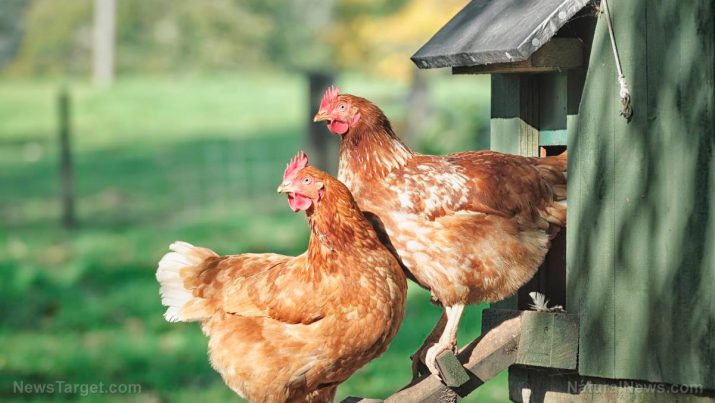Choose what’s best for you: Types of backyard chicken coops for different climates and budgets
Thursday, September 27, 2018 by Rita Winters
http://www.bugout.news/2018-09-27-types-of-backyard-chicken-coops-for-different-climates-and-budgets.html

When considering raising poultry, such as chickens, you have to plan their housing very well. Remember that raising poultry is not as easy as you think. Chickens have a tendency to get sick more often than pigs and cows do. They are sensitive to weather, and die off easily when left uncared for. If you want to raise healthy poultry, you’ll have to take special care in what type of house you build, as well as its location.
There are different types of chicken housing, or chicken coops. Some of the suggestions below may or may not be applicable to your situation, so it would be best to use common sense as well.
- Small chicken coops – These are coops that are less than three feet in height, and are usually enclosed spaces that still allow movement and enough sunlight. These small chicken coops, like chicken arks or commercial-igloo type coops, are generally mobile. Coop mobility allows you to transfer its location to a better suited piece of land, especially if flooding occurs during a rainy season. Small chicken coops can accommodate as few as two chickens to as many as eight chickens. This type of housing is good for small land areas such as backyards and wet weathers (elevated small coops). Small coops, however, do not provide sufficient insulation for colder weathers.
- Large chicken coops – If you have a dozen chickens or more, then you might want to opt for a large chicken coop instead of several small ones. These large coops may be mobile or not, depending on the materials used to build it. This type of housing generally looks like a straw hut, with stair-to-hatch entrance for the chickens and a door for farmers (for collecting eggs, and cleaning). This is the best type of housing for colder climates, since the coop itself can be made with bricks and mortar. If you’re building it from scratch, you’ll want to make sure the whole structure is elevated and drains well to avoid accumulating liquids inside and causing bacterial growth. Like all coops, consider its insulation and ventilation as well.
- Handcrafted chicken coops – These are often wooden, and have removable roofs for easier cleaning and general maintenance. As all coops should be, it should also be elevated, and must have sufficient leg room and ventilation (windows). The downside of building one yourself is that it costs time and money to get one up and functional, and is harder to maintain. Some material specifications may be costly as well, especially if you want to have an easy-to-maintain coop. You will also want to consider insulation for colder months, and proper ventilation and cooling for the hot weather.
- Commercial plastic coops – There are plastic chicken coops that are sold in the market, and you might want to opt for this, especially if you lack the creativity or resources to build one yourself. While these come in many different shapes and sizes, the prices for commercial chicken coops are quite steep. It has its benefits, though. Plastic coops are easier to clean and maintain, and have a longer service life as compared to wooden coops.
One thing we want to emphasize is that you do not need a lot of space to raise chickens. That’s a misconception many people have. What is important is that your chicks have enough room to roam. We recommend providing each chicken a space that is 15 square foot at minimum. So, if you’re planning on raising six chickens, you will need around 90 square foot of land, which is not really a lot when you think about it. However, if your chickens have more room, the better! A lot of homesteaders recommend at least 25 square foot per chicken.
Sources include:
Tagged Under: Tags: backyard farm, backyard farming, chicken coops, homesteading, Off-the-grid living, prepping

